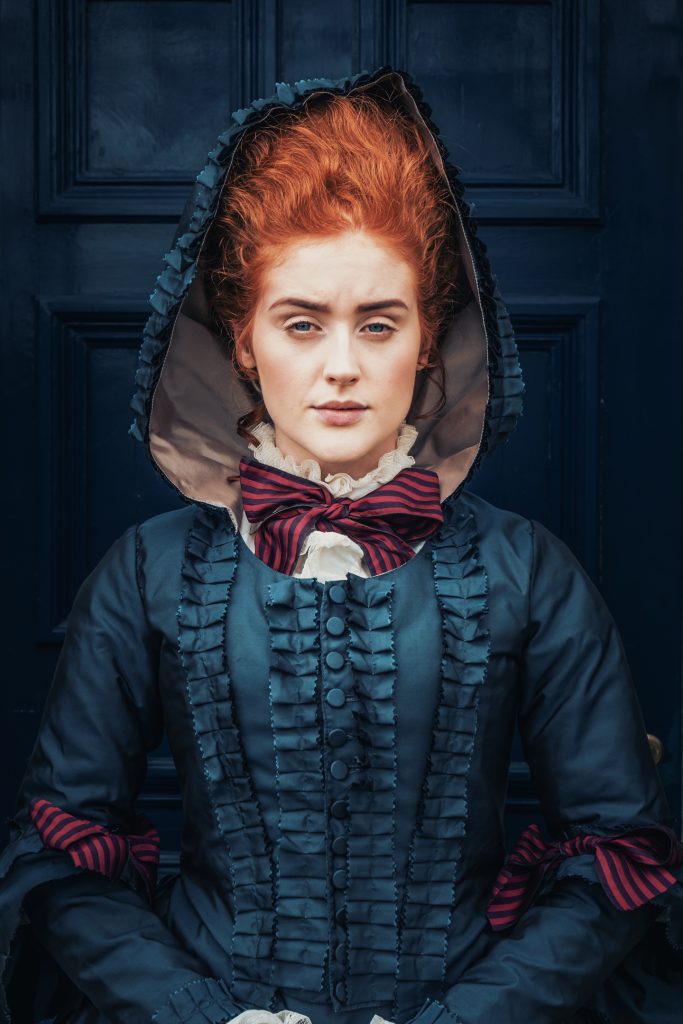
The 18th century travelling outfit known as a Brunswick is practical and elegant. To find out more about it see our ‘Getting Dressed in the 18th Century – Brunswick’ Film:

The 18th century travelling outfit known as a Brunswick is practical and elegant. To find out more about it see our ‘Getting Dressed in the 18th Century – Brunswick’ Film:
The history of dress is punctuated by periods of rapid change, especially for women’s dress. This is one such period.
Starring Hannah Gaskell, Charlotte Halse and Sophie Halse
Director and Cinematographer Nic Loven, Costume Pauline Loven, Hair and makeup Emily Johnson.
Filmed at Lincoln’s Arboretum and in a house overlooking it.
The knitted cardigan was created by Sheila Cunnea and the knitting patterns are all available in the Centenary Stitches knitting book by Elizabeth Lovick.
Another in our series of films on the history of costume, this one is on the clothing of a wealthy woman in 17th Century Holland. Watch to the end!
Starring Hannah Douglas, Sarah Whitehouse and Anthony Webster.
Director and cinematographer Nic Loven, costume Pauline Loven, hair and make up Liv Free, costume assistant Kelly Clark.
This was filmed at Gainsborough Old Hall in Lincolnshire.
The shoes were handmade by Kevin Garlick Shoes
The knitted stockings were made by Sally Pointer
The brazier and Delft tile were made by Andrew MacDonald, The Pot Shop, Lincoln
The Earrings were created by Parures de Lumières
This short film on the uniform and role of the VAD (Voluntary Aid Detachment) Nurse during WW1 reached a million views in its first week:
Actress Tiffany Haynes, Directed by and cinematography by Nic Loven, Costume by Pauline Loven, Assistant, Jasmine Clark.
It was filmed, in part, at the former VAD Hospital, now known as Stanhope Hall, in Horncastle in Lincolnshire.
We have just finished filming ‘Getting Dressed in the 18th Century – Gentleman’, for Lady Lever Art Gallery, National Museums of Liverpool. The film will be part of a new exhibition on costume and is a companion to the ‘Getting Dressed in the 18th Century’ film on a wealthy woman’s attire we made earlier.
The film is currently in post production and the music is being composed by Chris Gordon.
Here are some taster screen grabs:
The location was South Ormsby Hall in the Lincolnshire Wolds, and it was blowing quite a blizzard the day we filmed. However, were fortunate to reach the hall on time and all the crew get home again before the roads were blocked. This photo (below) is by set photographer Adam Fielding:
The film was directed by Nic Loven, the cast were Philip Stevens (Gentleman) and John Males (manservant), the costume was by Pauline Loven, the production assistant was Adam Fielding and the dresser was Kelly Clark.
We have just filmed a sequence on ‘Getting Dressed in the 14th Century’ – the century when it is considered that fashion began. The film has just been released on Crow’s Eye Productions YouTube Channel.
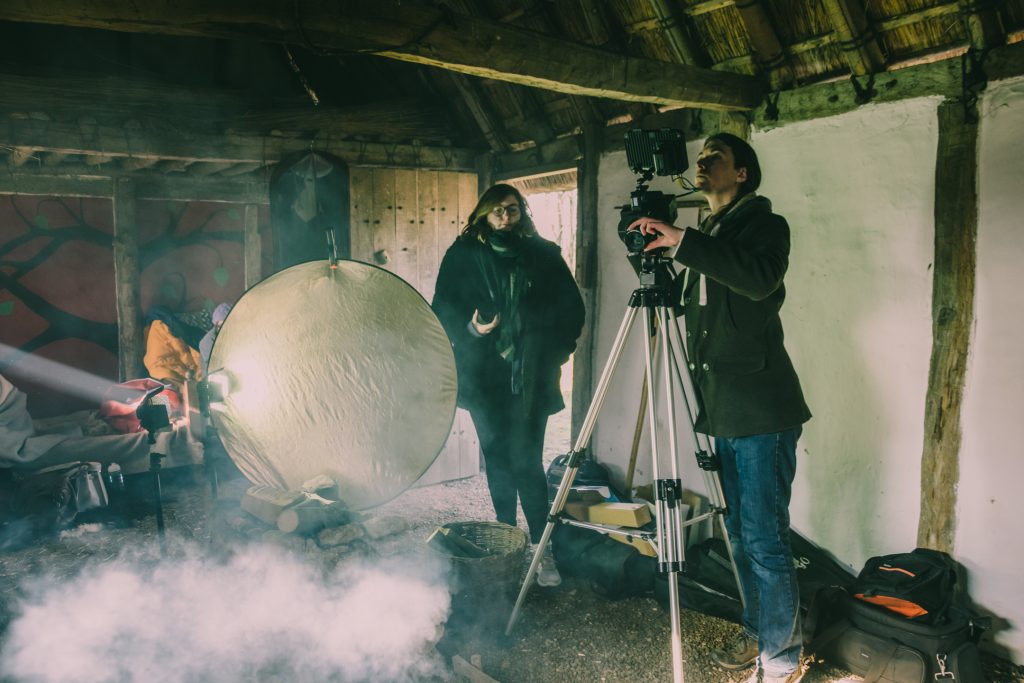
Below: Screen grabs from the film:
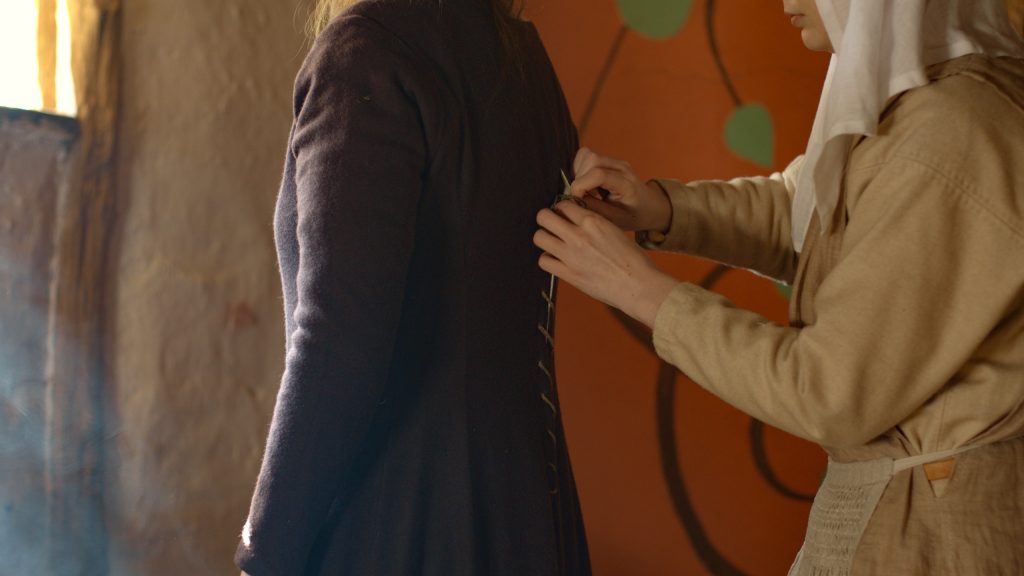
Director: Nic Loven, Production Assistant: Lilli Stoddart, Actors: Kirsty Hannah and Lucy Sherre Cooper, Costume: Pauline Loven, Hairdressing Anita Cudbertson, Location: The Saxon House.
‘Lucy Locket lost her pocket, Kitty Fisher found it, Not a penny was there in it, Only a ribbon round it’.
Have you ever wondered how you could lose a pocket?
Starring the Gordon family: Matilda Gordon, Robyn Gordon and Louie Gordon, with their mum, Lucy Gordon.
Music by Chris Gordon
Director, Nic Loven
Costume, Pauline Loven
Crow’s Eye Productions has just completed a follow-up to our film ‘Getting Dressed in the 18th Century’ that we made for Lady Lever Art Gallery. The immense popularity of the first film raised the question amongst the audience who viewed it and enjoyed the complexity of a wealthy woman’s dress: ‘who dressed the maid’? So we made the second film to explain in detail how dress was simplified by working women, and made more practical and affordable, while still maintaining the fashionable silhouette. As with the first film, this was devised, directed, filmed and edited by Nic Loven, and researched and costumed by Pauline Loven.

Our first task was to find a suitable location to film in, but we already knew of an almost unaltered chamber (bedroom) of a one-up one-down 18th century cottage, now part of the Friends Meeting House in Brant Broughton.
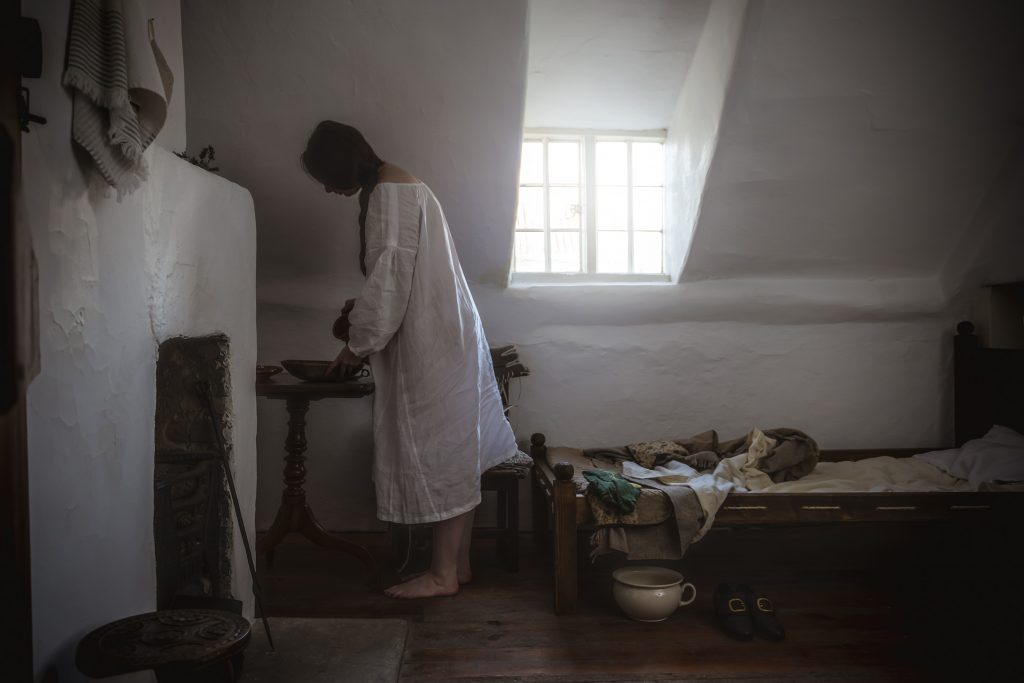
The cottage and attached barn had been donated to The Friends in 1701 and, apart from minor alterations to turn the barn into a Meeting House and subsequently to put in power and heating, the core of the building was maintained unaltered. The fireplaces, floors, doors (with original blacksmith door furnishings), walls and windows remained as they had been in 1701. Even the original cloak pegs were in place.
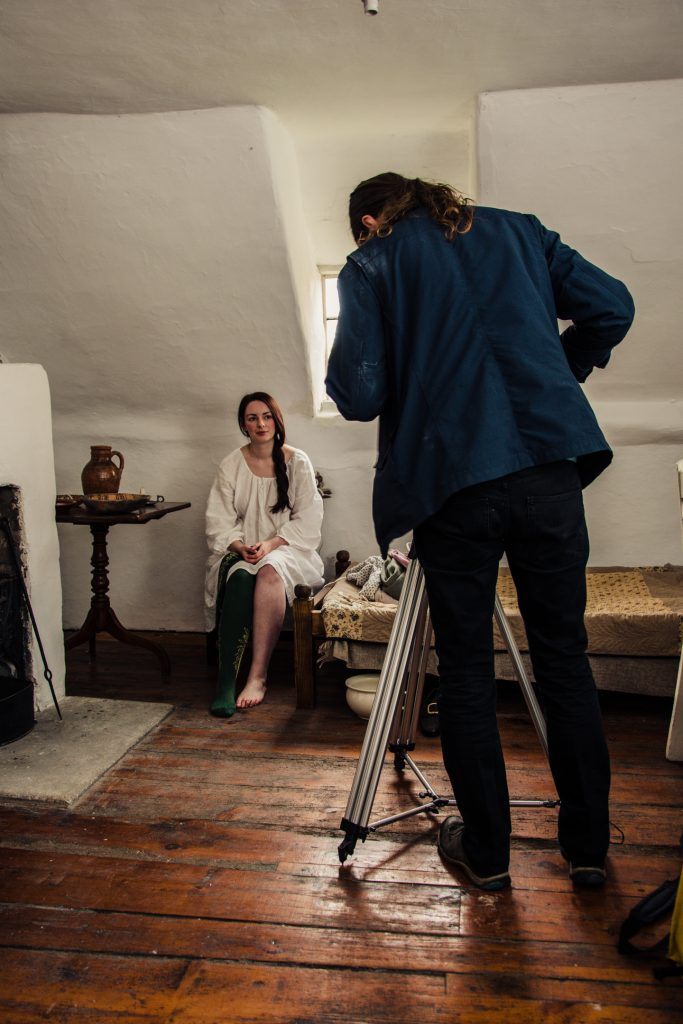
The only problems filming were the small area we had to work in and the fact that the original prayer benches had to be stacked to one side of the room.

We chose our model, Liv Free, for her natural English rose looks, but to her surprise and ours she turned out to live in the next village and so it was perhaps her easiest ever commute to a modelling job! Not only is Liv a beautiful model and hair and makeup artist, but she also has also created a line of extraordinary and opulent accessories, including headpieces and masks (though we didn’t need any for this shoot!).
Our Voice Over Artist, Martha Milne, is an American who has lived in Lincolnshire for many years. She has been a long term collaborator with Nic Loven and Crow’s Eye Productions.
The script was researched and written by our period costumier Pauline Loven and edited by Martha Milne. Pauline also created the costumes and produced the film.
The film was made on the tiniest of budgets – even the replica period pottery was loaned to us (by Andrew MacDonald from the Pot Shop in Lincoln), and the bed was made at cost by carpenter Peter Halse. So a huge thank you to everyone who made this possible!
Full list of credits:
Director/Cinematographer: Nic Loven
Producer/Costumier: Pauline Loven
Production Assistant: Lilli Stoddart
Woman: Liv Free
VO: Martha Milne
Location: Friends Meeting House, Brant Broughton
Carpentry: Peter Halse
Pottery: Andrew MacDonald of the Pot Shop, Lincoln
Bed Quilt: Martha and Emily Milne
Cockerel: Hughie
Special thanks to the Friends for permission to use the Meeting House and to Wendy Gwatkin in particular for all her support at the Meeting House and the loan of antique furniture too!
Many thanks to John and Sam O’Boyle for allowing us to record their cockerel Hughie!
Lady Lever Art Gallery has now commissioned us the make another film, this time on the dress of a wealthy 18th century man.
In 2015 Crow’s Eye was contacted by a media company, completing the digital interpretation of a museum, to create a short video showing the layers of eighteenth century costume.
The video was intended as part of the interpretation of the eighteenth century gallery which featured many society portraits from the era.The media company added the VO – though this is also something Crow’s Eye has expertise in.
Crow’s Eye costume department worked closely with Pauline Rushton, the costume curator of Lady Lever Art Gallery. You can read Pauline Rushton’s blog here and Pauline Loven’s blog here.
Since the completed film was released online it has gone viral with over one and a half million views and growing:
Please get in touch if you would like to discuss having a museum video made.
A combination of photography and video can make a very effective advertising campaign using social media. Here is some of the work Crow’s Eye Productions did for Superior Threads just before Christmas. Working with quilter and designer Martha Milne, Nic Loven produced the following images and video featuring Superior Threads. Superior Threads can used for crafting, sewing, quilting, embroidering, serging, or upholstering, and can be purchased here: Machine Quilter.
Contact Crow’s Eye Productions if you are interested in discussing developing a unique identity and presence on social media through photography and video.